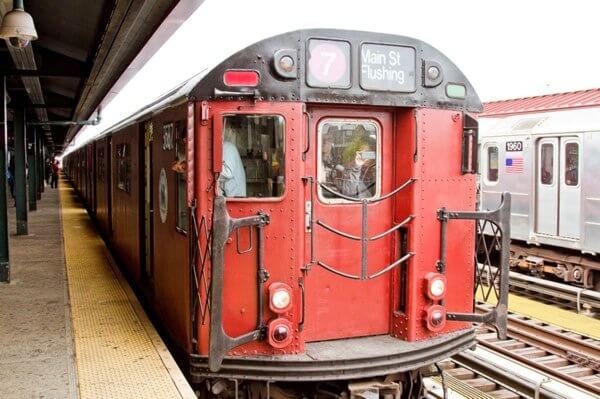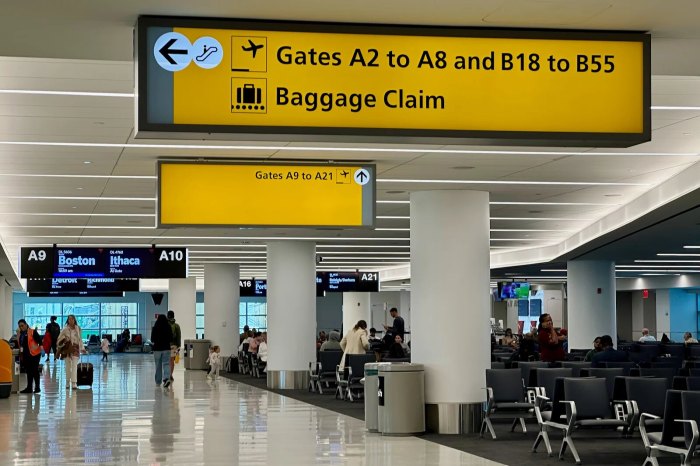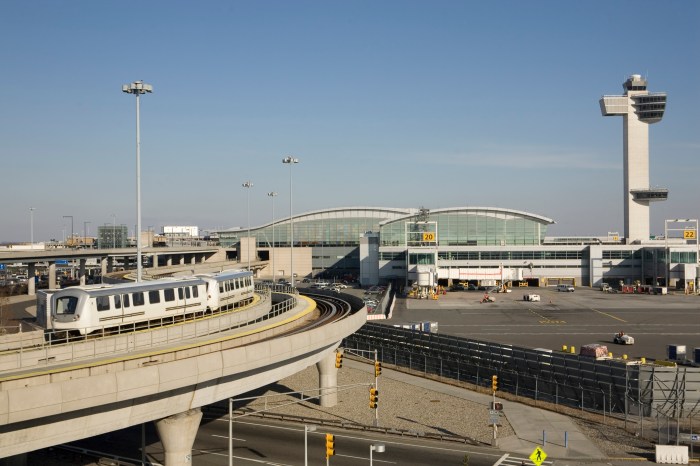By Mark Hallum
Transportation advocates and enthusiasts met in Penn Station last Friday to celebrate the centennial of the 7 train and the role it has played in the development of Queens. But there was an honest undertone of apprehension about the declining state of the overburdened vein through the World’s Borough as overcrowding and deteriorating infrastructure take its toll.
Officials from Access Queens, the Transit Museum, and advocate Joe Raskin, from Riders Alliance, led the crowd in a news conference showing off photos of the elevated tracks under construction around 1917 when Queens was nothing but agricultural fields. The train line was started at a time when overcrowding in Manhattan was at frightening levels. Tenements reigned supreme in Lower Manhattan, with immigrants pouring in everyday. Queens County was open ground.
“It had a very strong and positive impact on the growth of northeast and western Queens,” Raskin said. “Everything that’s in Queens now is there because of the 7. Nothing was there… The whole point was to allow for development beyond the downtown areas of the city. The population needed to grow from that because the congestion was just too great.”
Raskin explained that the Flushing-Main Street area was a little village and the concept of the subway stretching into the outer boroughs was to get transportation ahead of growth.
“It was very a much a weapon for economic, residential and commercial development,” Raskin said, explaining that concept is still alive today in the sense that the 7 line was expanded to meet the demands of newly developed Hudson Yards in recent years.
But according to members of Access Queens, there is a dark side: over-utilization of the tracks.
Executive Director Melissa Orlando founded Access Queens as ridership increased to levels unseen in her lifetime. With Mayor Bill de Blasio’s proposal to develop Sunnyside Yards, she fears for the future of the line with the potential for more residents.
A study commissioned by the New York City Economic Development Corporation in February said the 180-acre active railway yard would be built over with as many as 24,000 residential units. Thirty percent of them will be affordable housing, costing between $16 billion and $19 billion.
Just two days before the celebration on the Penn Station platform, a complete breakdown of the 7 line’s century-old signal system caused the entire line to seize up. But Orlando is hopeful that the new Communications-Based Train Control system being installed will run more trains closer together.
“There really needs to be a way to create more capacity, and the CBTC work that is going on will add in a little more capacity along the line,” Orlando said. “We also need to think about alternate bus routes and other modes of transportation that can take some of the pressure of the train, as well as central Queens as a destination for business so that we redirect some of the traffic so there’s not always this rush to get into Manhattan.”
Joseph Anastasio volunteers with Access Queens. While considering the effect the shutdown of the L train will have on the 7, he came to the conclusion that the next-best bet for Brooklyn commuters to get across the river will be to transfer from the G to the 7.
“A lot of these people aren’t going to have a choice,” Anastasio said. “I was crunching some numbers the other night. If they pump up the number of G trains they’re thinking of increasing the volume of — because they want to run more trains and longer trains — that could mean several thousand more people per hour coming to the 7, E and the N, and I don’t know. Is there enough room?”
The news conference was followed by a ride on the Transit Museum “Train of Many Colors,” a throwback to an earlier time in New York City’s past, featuring antique train cars used during different eras of history.
Commuters waiting on the platform stood in surprise as the peculiar sight made its way through the station and got an unexpected ride into the East River tunnel and back to Queens.
Reach reporter Mark Hallum by e-mail at mhall



































